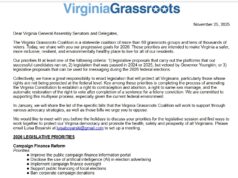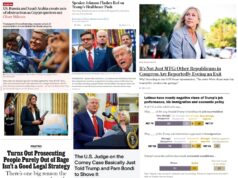This piece is appearing in newspapers in my red congressional district (VA-06).
*******************
The recent election in the United States showed a divide between rural areas, which tend to be more conservative, and urban areas, which tend to be more liberal. How is that pattern to be explained?
To a great degree, the explanations of that divide in America are the same as for why that same pattern has been visible throughout history and across the world. But, additionally, our present situation may have some elements of its own.
As for the historical pattern, here are some parts of the explanation:
1) Throughout history, change has radiated out from urban centers. The root of the very word “civilization” refers to cities. Which means that rural areas have been the repositories of “the way things have been.” Or, to put it another way, rural areas are more “traditional.” And adherence to tradition is one of the main aspects of “conservatism.”
The traditionalism of people in rural areas also gets compounded by the tendency of those among the youth, who feel less attached to tradition, and more drawn to the dynamism of change brewing in the cities, to move away from their roots toward the urban world.
2) Life in urban areas allows far less self-sufficiency, and requires far more interdependence, than life on the land.
Here’s just one example.
The people who live on the land will likely get their water from their own wells. They need no one else for that necessity. Someone in a big city like, say, New York City or Los Angeles, gets water out of the tap only thanks to a complex and vast infrastructure that brings water to the city from distant reservoirs and through a web of pipes large and small beneath the streets.
A glass of water in the big city, in other words, requires a lot of people to act collectively through their government.
The consequence is that the more self-sufficient residents in the rural area sees less need for collective action through government than the city-dwellers who continually experience how government makes the basic processes of their lives possible. And since the belief in “small government” is one of the themes of conservatism, these different realities of rural vs. urban life will tend to foster that conservative/liberal divide.
3) Another relevant difference between life in rural and in urban areas concerns uniformity versus diversity in the surrounding population. The cities have always been places where people of different backgrounds come together. These differences can be cultural, racial, linguistic and, in the more cosmopolitan centers, national. The rural areas tend to be more homogeneous in all those ways.
Having to deal with people different from oneself can produce different responses in different people. But overall, the experience of ongoing interaction across such boundaries makes people more tolerant of difference, more cognizant of the many different forms of goodness in people, more willing to respect that other people can make choices different from one’s own.
A good deal of politics – particularly in America nowadays — deals with how to relate to such issues. Will differences be respected or condemned? And will outsiders be welcomed or expelled? On all such matters, the rural people who are more accustomed to being surrounded by people like themselves are more likely to take a harder line, which also means a more “conservative” approach.
All those are perennial differences between life in the city versus the countryside that help to explain the worldwide phenomenon, through the ages, of rural conservatism and urban liberalism.
But in America in our times, there has been another quite recent development in the “bluing” of the metropolitan areas. Namely, that this November a lot of the Republicans living in the suburbs switched from voting Republican in 2016 to Democratic in 2018.
How is this switch, which compounds the rural/urban division in our politics, to be explained?
What most interpreters have emphasized in describing the suburban Republicans that made the switch is that they are more highly educated than the rural voters who stuck with Trump and his Party. Which raises the question: Why would educational level make that kind of difference?
As the son of two parents who were educators, and who made the education of their children a top family priority, I would like to believe that more education makes people more capable of critical thinking. I’d like to believe, in other words, that more education enabled those suburbanites to see through the lies that have driven the Trump presidency and, subsequently, the Trump Party. And that it was this clearer awareness led them to reject the Republicans they’d helped put in office just two years before.
I’d like to believe it, but I’m not sure it’s true. Education certainly should make people less vulnerable to manipulation by dishonest politicians. But whether education in America serves that purpose, or not, I don’t know.
But I do know that a healthy democracy depends on a citizenry that has developed the capacity to separate truth from falsehood, to differentiate between an argument that holds water and one that’s full of holes, and to judge which among the people seeking power can be trusted and which cannot.













